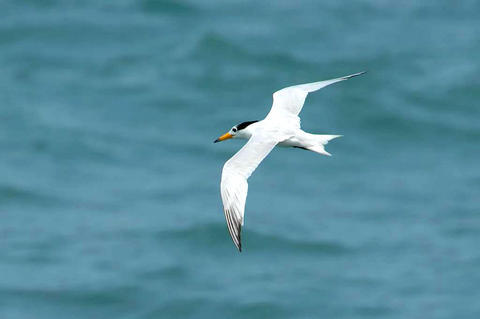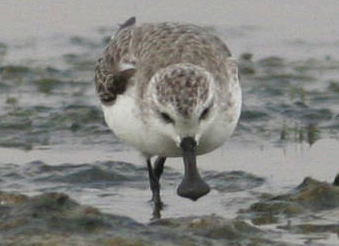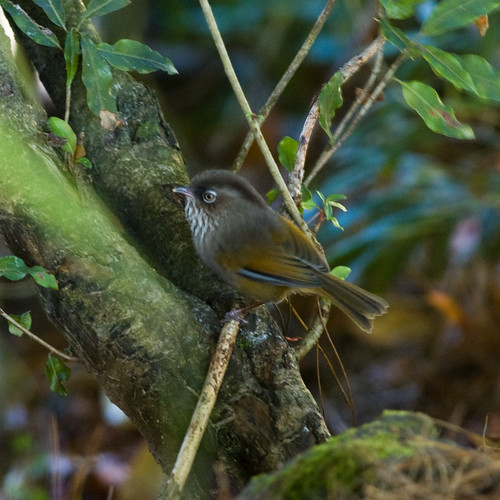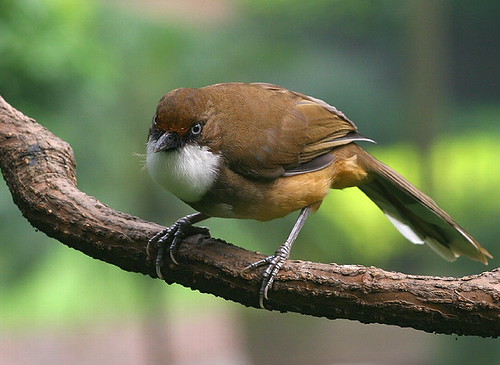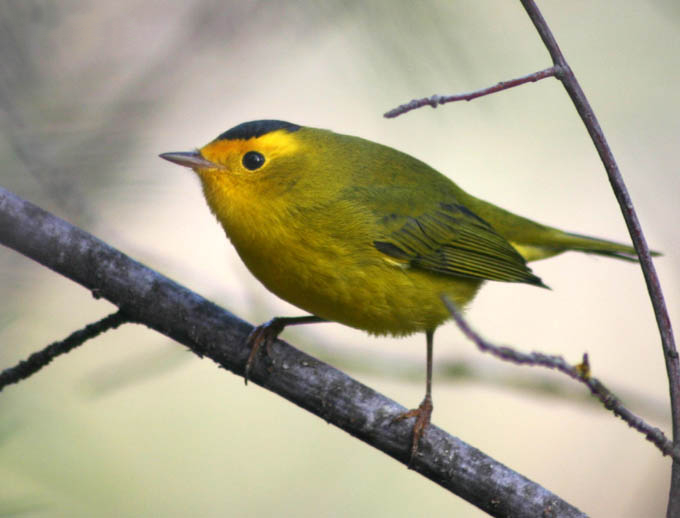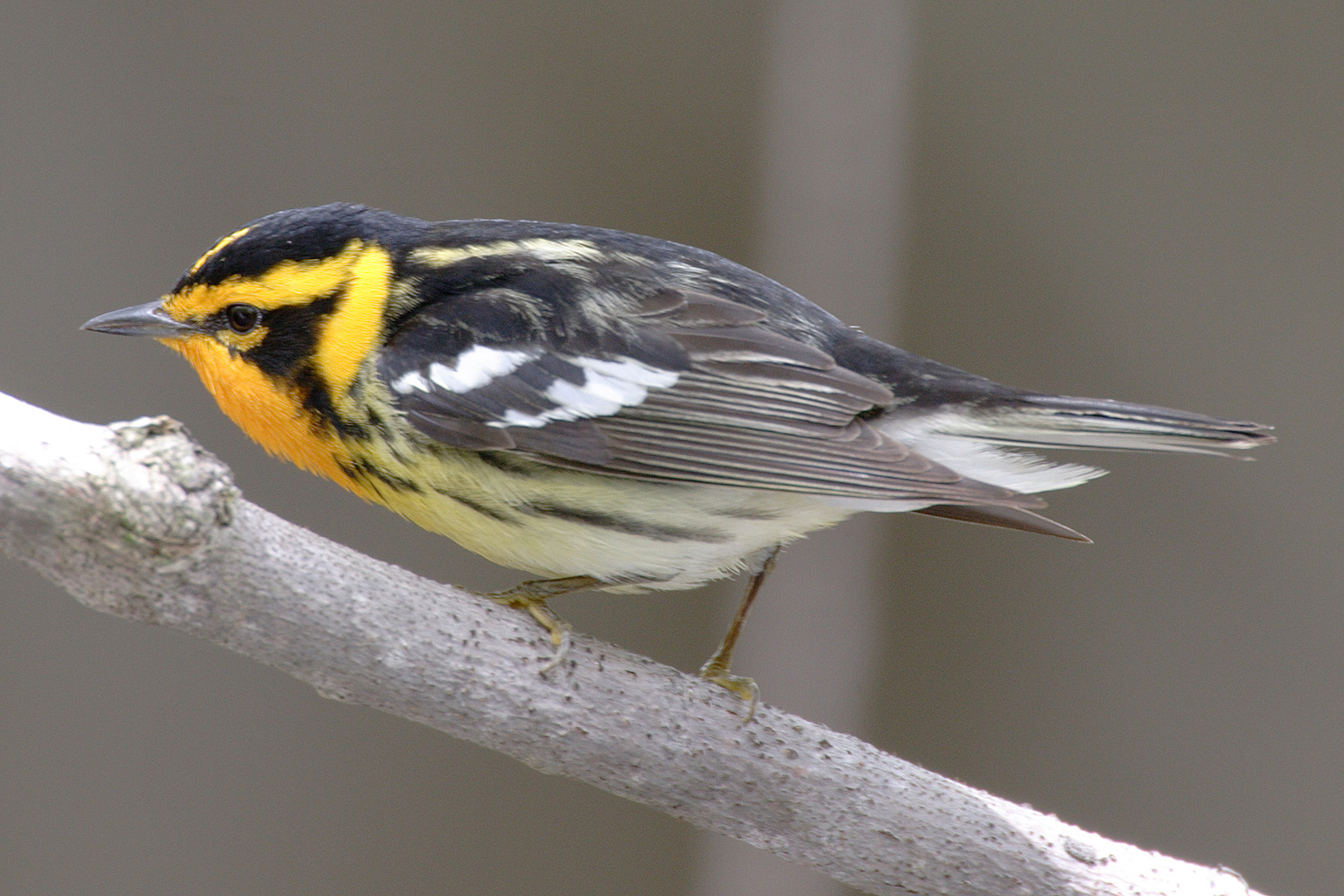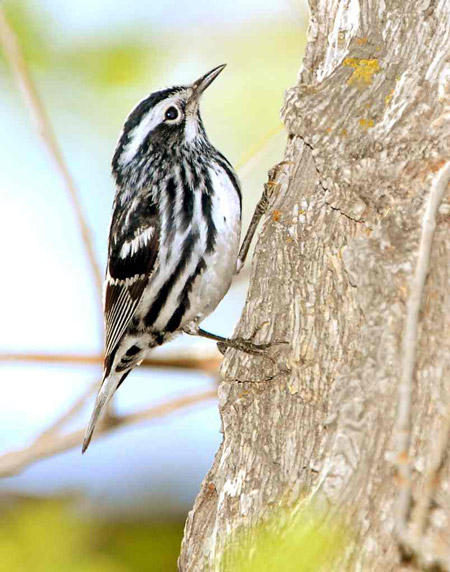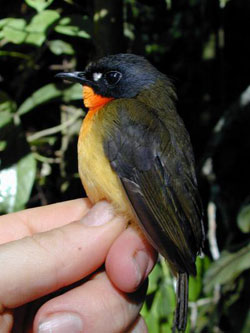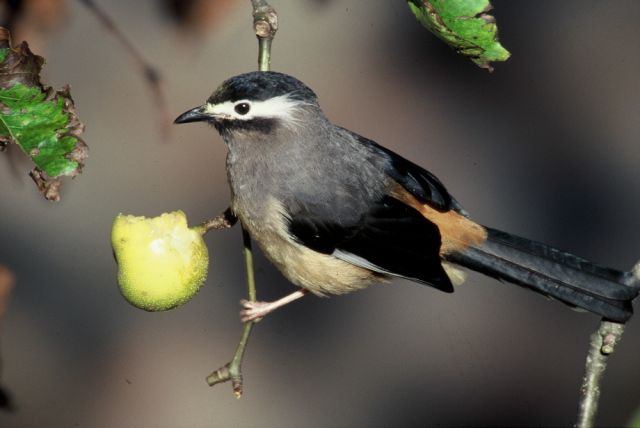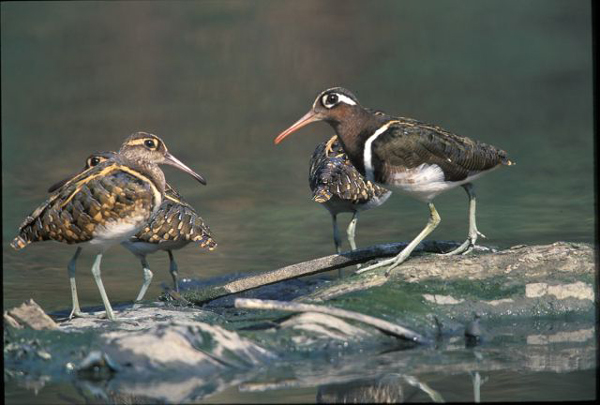
Taiwan Tit (
Parus holsti)
Image Source:
Birding HolidaysTaiwan is a wonderful place to watch birds. Each year, approximately 450 species of birds can be found on the small island. As such, Taiwan has the second highest bird density in the world (Madagascar is first). In addition, Taiwan has 15 endemic species, the majority of which can be found in the mountainous regions.
Geographically, Taiwan has many features that make it an attractive place for birds. The majority (almost 70%) of the island is comprised of mountains with elevations of 100 meters or greater – more than half of which are over 1000 meters. The tallest peak on the island is Yushan (Jade Mountain), with an elevation of 3,952 meters. The remainder of the island is primarily alluvial plains - with a lots of agricultural development (and lots of people). As such, Taiwan offers a wide variety of birding habitats, including coastal wetlands, estuaries, grasslands, agricultural areas, tropical rainforests, broadleaf & bamboo forests, and high alpine forests.
The other feature contributing to Taiwan’s high bird density is it location. Taiwan is located in the western Pacific, about 130 km east of mainland China. The Tropic of Cancer passes directly through the southern part of the island. More importantly, it lies at the midpoint of the migration routes for birds traveling between their summer breeding grounds in Japan, China and Siberia, and their southern wintering grounds in the Philippines, Indonesia, and New Zealand.
Logistically, it is pretty easy to get around. The roads are good and the accommodations and food are reasonably priced. For those interested in planning an itinerary, I would suggest reading the trip reports posted on
Surfbirds, particularly those of
Andy Mears and
Albert Low.
FINDING A FIELD GUIDEAfter binoculars, a good field guide can be a birders most important tool. I have used several in the past, such as MacKinnon and Phillip’s
Field Guide to the Birds of China, James Wan-Fu Chang's
Field Guide to the Birds of Taiwan, Wu Sen-Hsiong's
Field Guide to the Wild Birds of Taiwan, and Severinghaus and Blackshaw’s
New Guide to the Birds of Taiwan. All the guides are good, but each has its strong points, as well as its drawbacks, as I discuss below.

Field Guide to the Birds of Taiwan
James Wan-Fu Chang's
Field Guide to the Birds of Taiwan covers 458 species. Although the common and scientific names of each species is given in English, the main text is written primarily in Chinese, making it problematic for birds not versed in Mandarin. However, there are very brief English language descriptions of the range, habitat and status of each bird which I found helpful. In addition, reasonably good range maps are also shown for each bird (excluding vagrants). On the down side, I found the plates to be somewhat below the standard that most birders have come to expect. Paintings appear hastily done and often do not sufficiently show key field marks which are helpful in distinguishing similar species.

Field Guide to the Wild Birds of Taiwan
Wu Sen-Hsiong's
Field Guide to the Wild Birds of Taiwan (ISBN 957-9578-00-1) covers 444 species. Like Chang’s guide, it is also written in Chinese. However, with the exception of the common and scientific names, there are no English language descriptions of any kind. That being said, the range maps and paintings are far superior to Chang’s guide. Key field marks are clearly indicated, and paintings of birds in flight are also shown when appropriate (e.g. gulls, terns, shorebirds, hawks, etc)

Field Guide to the Birds of China
MacKinnon and Phillip’s
Field Guide to the Birds of China is more extensive, covering 1329 species. This guide addresses some of the drawbacks of the previous two guides. For starters, it is written entirely in English. The paintings are generally of high quality, and differences between subspecies are indicated. Range maps are also shown on the page facing the paintings. The descriptions of many (but not all) species are fairly well detailed, and the ranges for subspecies is also described. The guide does have some minor problems, which are probably unavoidable. Because of the number of species described, the guide is quite bulky - and somewhat expensive. In addition, the descriptions are in the back of the guide, rather than on the page adjacent to the paintings, making it somewhat inconvenient to use. Some of the species descriptions, particularly those of the Taiwan endemics, seemed to have been glossed over. And although most of the paintings are of high quality, not all were. Overall, I think they are slightly inferior to those of the Wu guide.
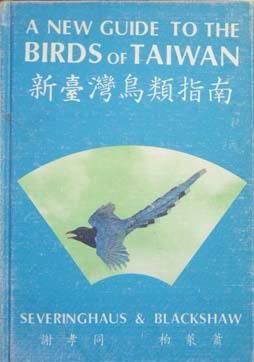
New Guide to the Birds of Taiwan
Severinghaus and Blackshaw’s
New Guide to the Birds of Taiwan has the least coverage of any of the guides - only 201 species covered. Species covered include the endemics, the most common summer/winter residents (approx. 150 birds), and the migrants one is likely to see. Rare visitors and vagrants are not represented. In addition, the paintings are not the best, and only show a small handful of birds (about 45 birds on eight color plates). The artist is apparently the same person who did the paintings from the Chang guide. A few other birds, including hawk silouettes, are done in b&w pencil drawings, and are surprisingly good. The guide also has a
very strong upside, making it indispensible. For starters, it is written in English (and Mandarin). It has excellent descriptions of the habitat and subtle behaviors that are very helpful in making IDs. In addition, the verbal descriptions of the bird calls and songs are also remarkably good.
If I could only choose one guide, my personal recommendation would be
Field Guide to the Wild Birds of Taiwan by Sen-Hsiong Wu. It is jointly published by the Taiwan Wild Bird Society and the Wild Bird Society of Japan. I picked-up a copy in Taiwan for about $30. If I could add another as a supplement, it would be the Severinghaus and Blackshaw guide. This one is a bit harder to find, as it is out of print. I found a copy in an on-line antiquarian book store for about $25.
RESOURCES FOR BIRD IDENTIFICATIONWhen planning any birding adventure, it is always a good idea to do your homework ahead of time. That means familiarizing yourself with the birds you are likely to see. For me, that entails learning the field marks, the calls and songs, as well as the best places to find birds once you arrive at your destination.
For field marks, a good place to start is with a field guide, as stated above. In addition, there are also a number of sites on the internet where you can view photos of birds. Sometimes this can be very helpful, as painting don’t always do a bird justice. For Taiwan, I have found
Birding in Taiwan and
Oriental Bird Club to be two excellent websites.
Field Recordings
Learning the calls and songs is a
must for Taiwan. For birds calls and songs, there are a number of commercially available tapes and CD’s. While these are helpful, they do pose a few problems. For starters, they tend to be costly. In addition, only a limited number of species are represented, and then only by their most common songs and calls. Alternate songs and calls are frequently left out. Fortunately, the internet comes to the rescue again. A number of websites have made field recordings available. In addition to the calls and songs, the location of the recordings is also given, allowing one to distinguish variations in calls between subspecies.
The best site - by far - is Cornell’s
Macauley Library. This site contains countless hours of field recordings of many (but not all) birds across the globe. Most species are represented by multiplue recordings, which typically include alternate calls and songs. The Cornell site does have its downside. For example, because they are field recordings, they sometimes contain background noise, such as traffic, barking dogs, wind, and other birds. In addition, not all the recordings are publicly available at present, and not all birds are represented.
In addition to the Cornell site, there are also several good sites that are specifically dedicated to Taiwan birds. These sites contain a fair number of field recordings that can be used as a supplement to the Cornell recordings. Moreover, one may also find recordings of species that are not reprensented in the Cornell collection. In the case where the Cornell field recordings contain background noise or are of poor quality, one may find a better quality recording. In addition, these website typically contain other useful informations, such as general descriptions, data on range and habitat, life histories, and photos. For Taiwan birds, the most useful sites are
Birds of Taroko Gorge, the
Taiwan Goverment Information Office, and
Wayne Hsu’s Page.
Birding Guides

Birdwatching in Taiwan
Where to go? That is best determined by reading trip reports or picking up a copy of a birding guide. Although I have never used a birding guide in Taiwan, there are several that are commercially available. The one that appears to be the most recommended is
Birdwatching in Taiwan, by Rui-De Shi. This guide covers 52 birding area in Taiwan, as well as some of its surrounding islands. According to the publisher’s description, “
the book also introduces the distinguishing features of ecosystems, the best seasons for visiting, and transportation details”.
OTHER RESOURCESIt is also a good idea to plan your itinerary in advance. To do so, it is helpful if you know a little something about the geography and culture, as well as the infrastructure and accommodations, of the place you are visiting. The internet offers a good resource for this type of information. As I have stated above, trip reports from other birders can be very helpful. For those, I have found
Surfbirds to be the best site. Bird blogs are also good resources. I have added a few Taiwan bird blogs to my blog role on the right column of this page. There are also a number of eGroups and listservs through which one can get in touch with others who live or bird frequently in the region of interest. For Taiwan, I have found Yahoo!'s
Oriental Birding Club to be very helpful. One could also do a Google search for more sites.
